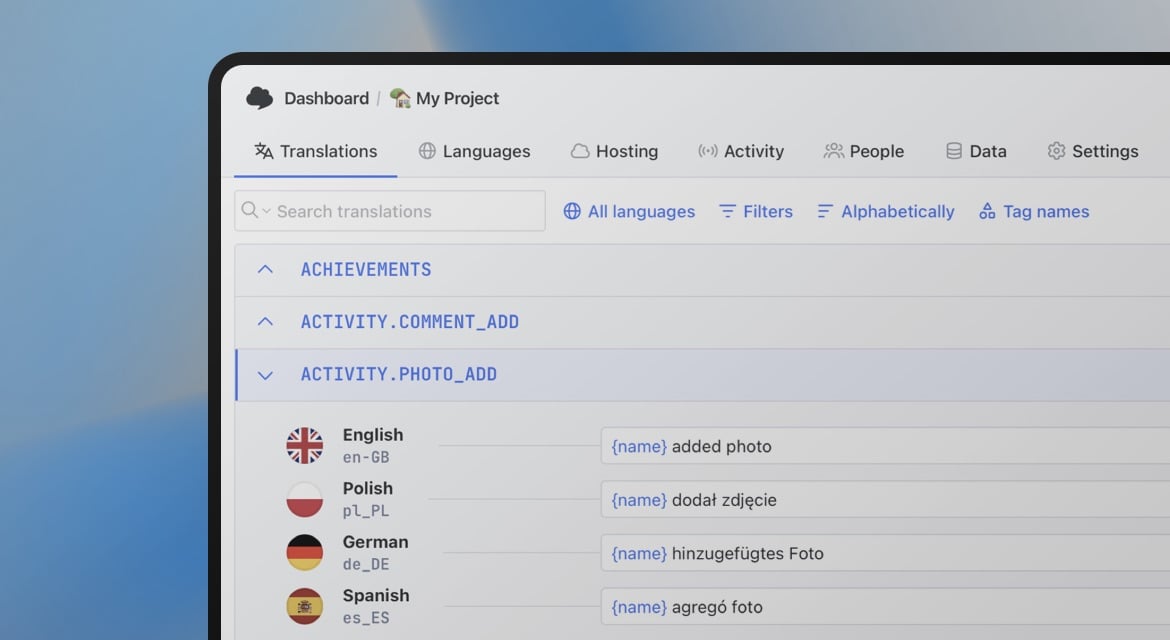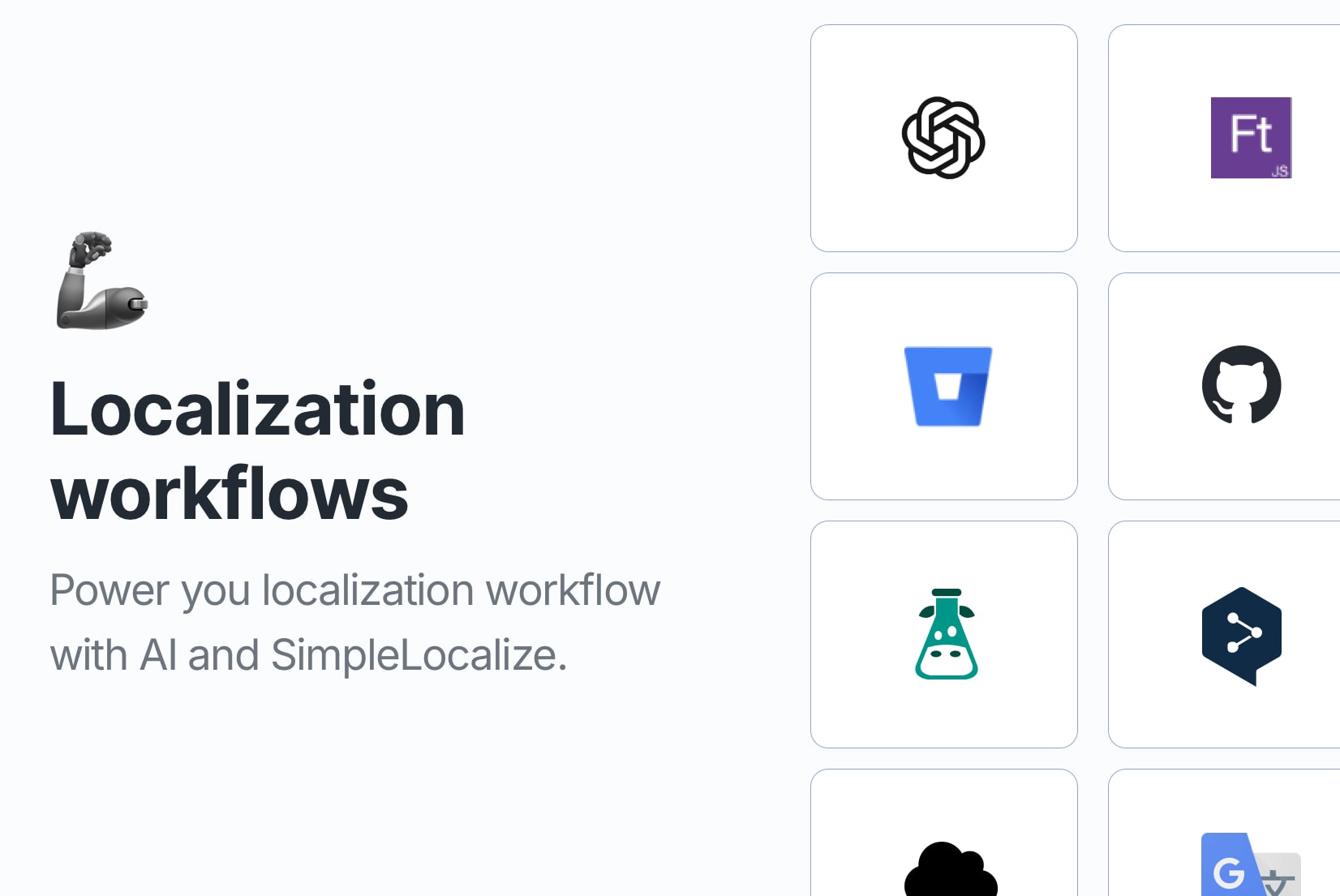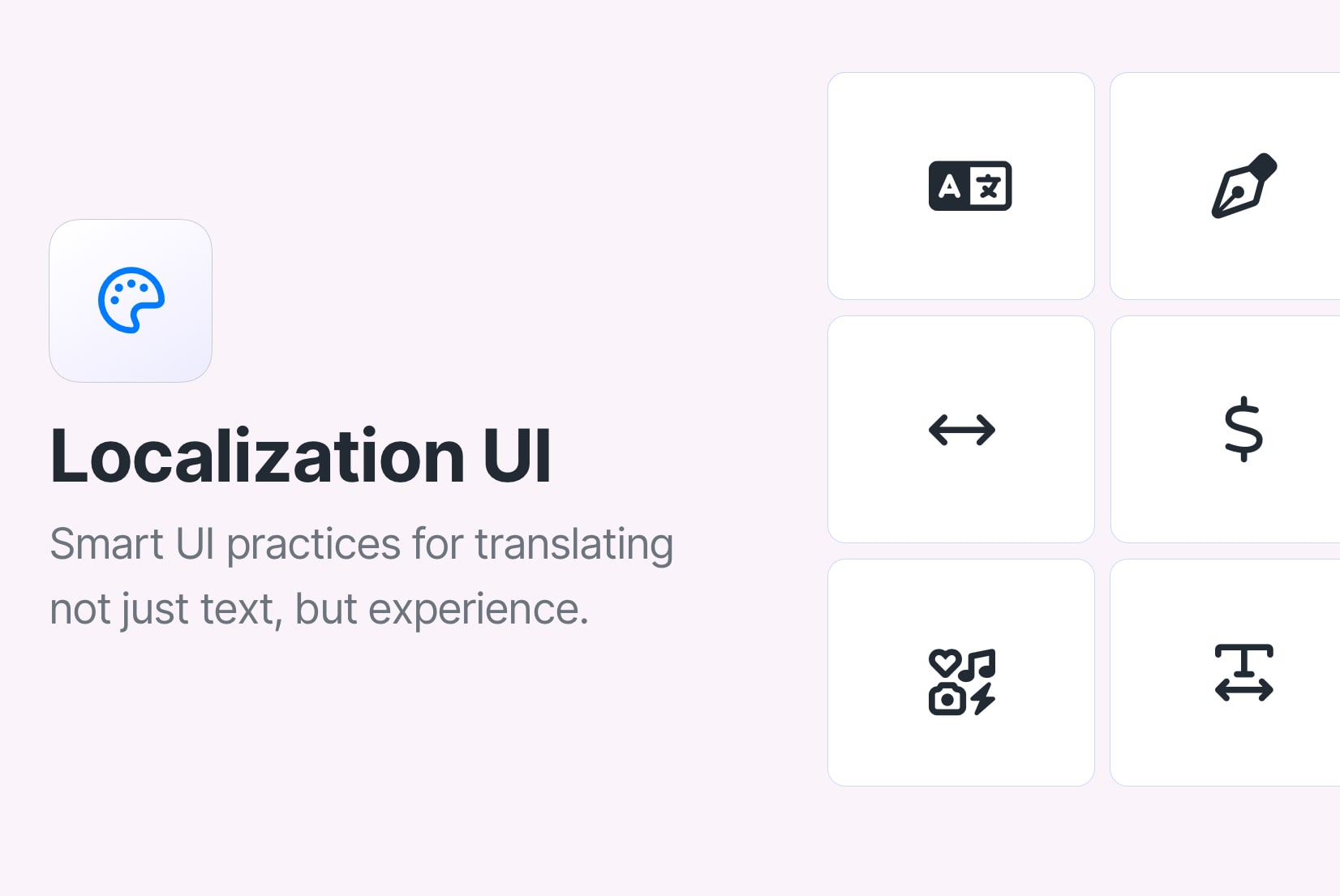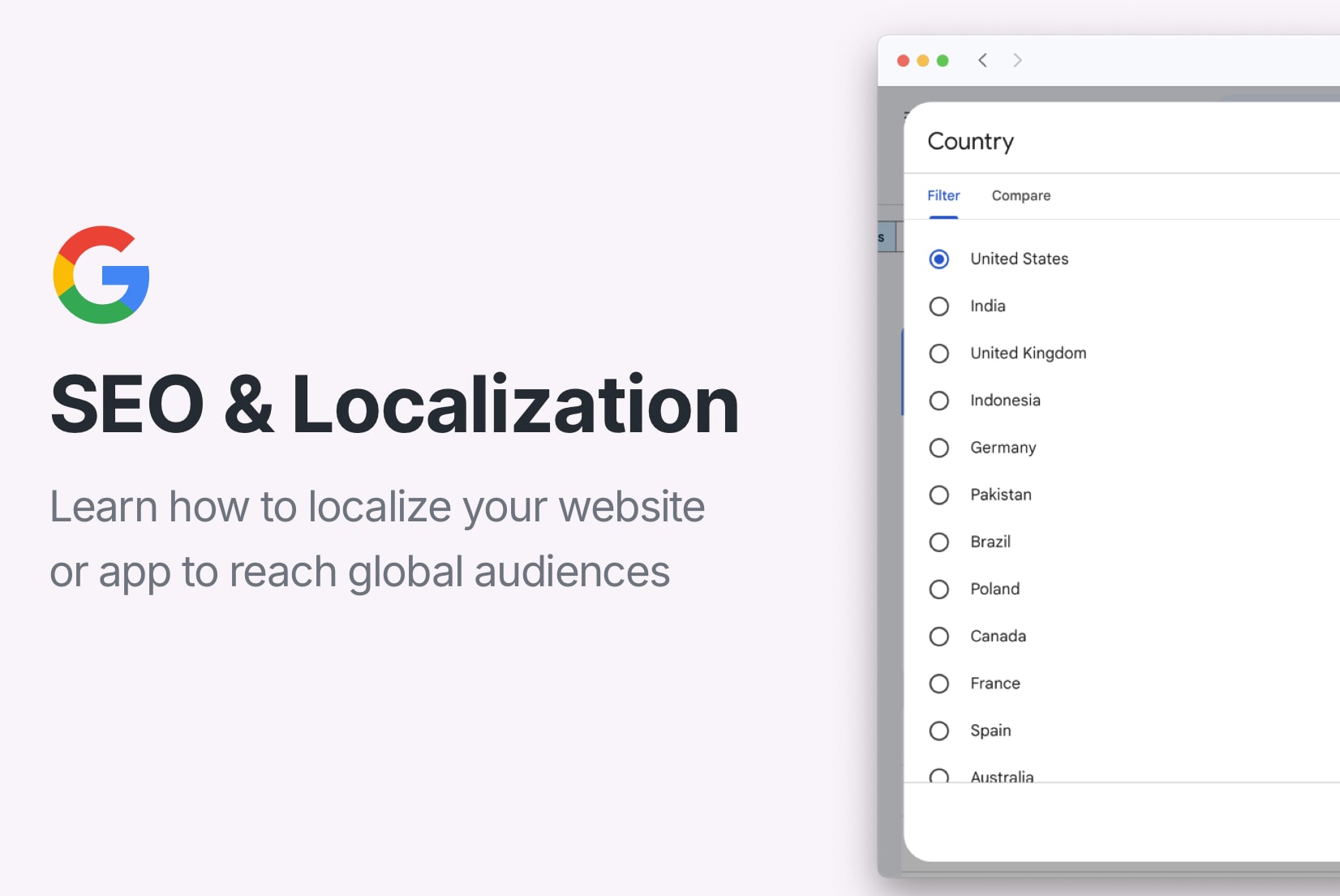Context in Localization
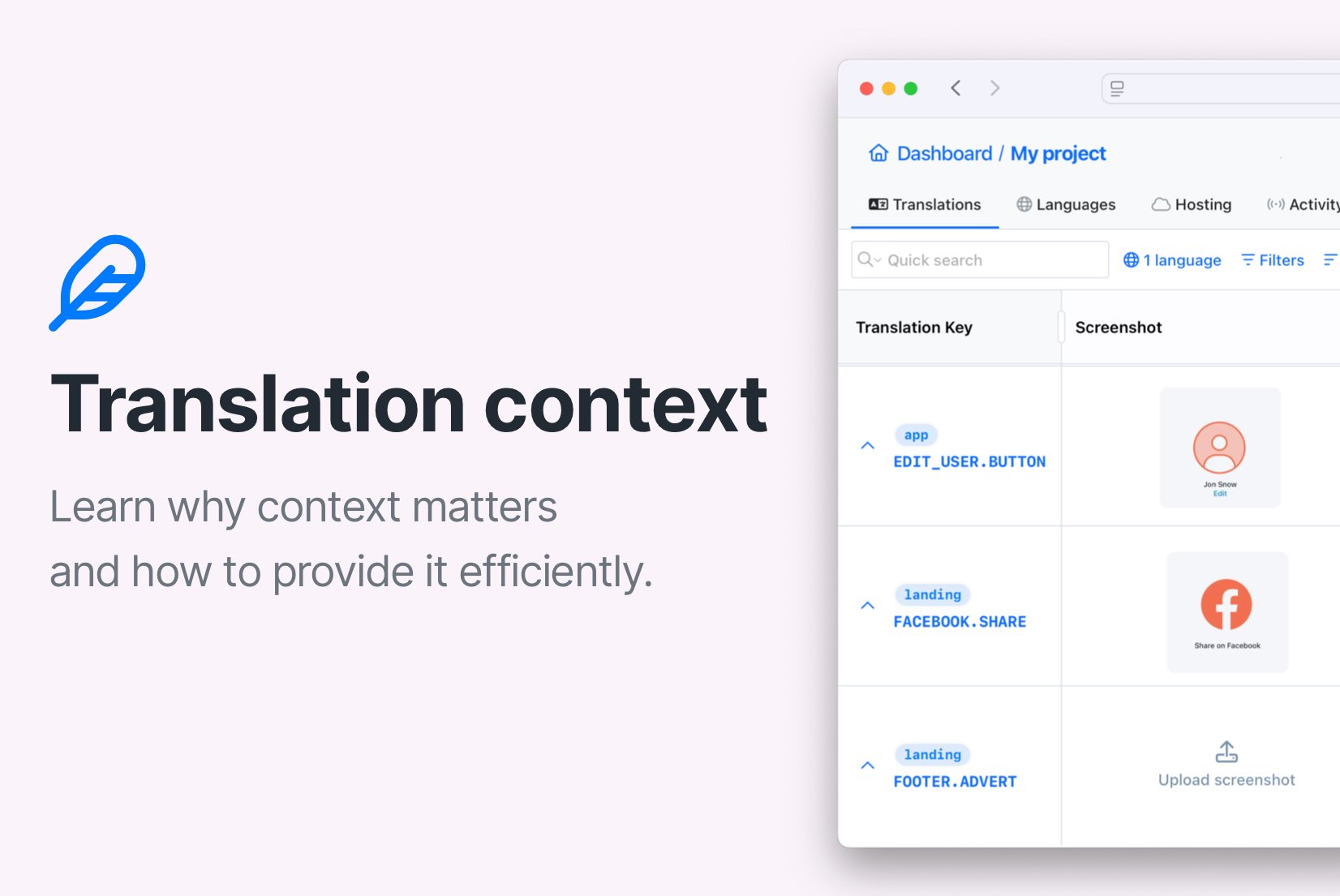
When it comes to localization, context is everything. Providing translators with the right context can significantly improve the quality of translations and ensure that the final product resonates with the target audience. In this blog post, we'll explore why context matters in localization and how you can effectively provide it to your translators using SimpleLocalize.
What is context in localization?
Context in localization refers to the information surrounding a piece of text that helps translators understand its meaning and intended use. This includes details about the content, audience, and how it fits into the overall user experience. Context can be conveyed through key names, descriptions, screenshots, and comments.
Providing context is crucial for translators to make informed decisions about word choice, tone, and style. Without it, translations may be inaccurate, leading to confusion or a misrepresentation of your brand.
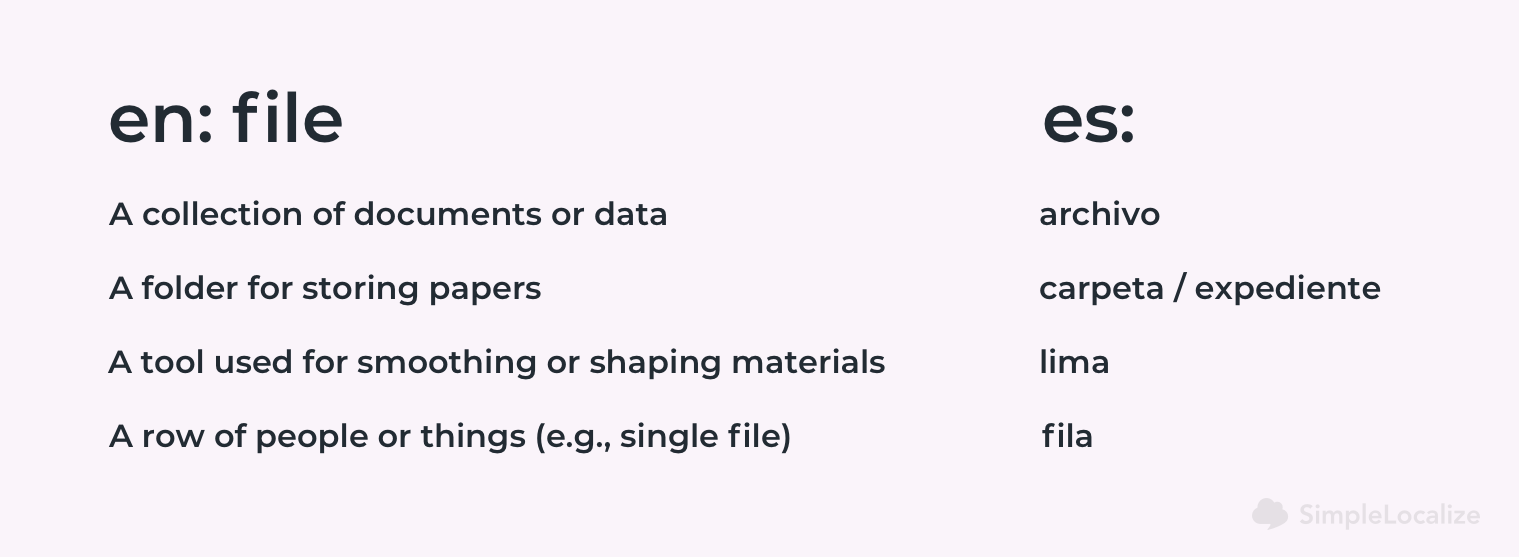
In software localization, context is especially important because the same word or phrase can have different meanings depending on where it appears in the application. For example, the word "file" could refer to a document, a folder, or a database entry, depending on the context in which it is used.
Beyond word meaning, context also helps align translations with user intent and the application's functionality. It ensures that the wording meets user expectations and enhances usability.
Contextualization
Contextualization is the process of providing additional information about a piece of text to help translators understand its meaning and purpose.
It's a term often used in the localization industry to describe the practice of providing context to translators. Contextualization is essential for ensuring that translations are accurate, relevant, and resonate with the target audience.
Contextualization can take many forms, including:
- Key names: Use descriptive names that hint at the content's function.
- Descriptions: Explain a key's purpose and usage in detail.
- Screenshots: Show how the text fits into the interface.
- Tags: Categorize keys based on their usage.
- Namespaces: Group related keys for better organization.
- Comments: Offer additional notes for clarification.
- Translation memory: Provide references to previously translated strings.
- Glossaries: Define key terms to ensure consistency.
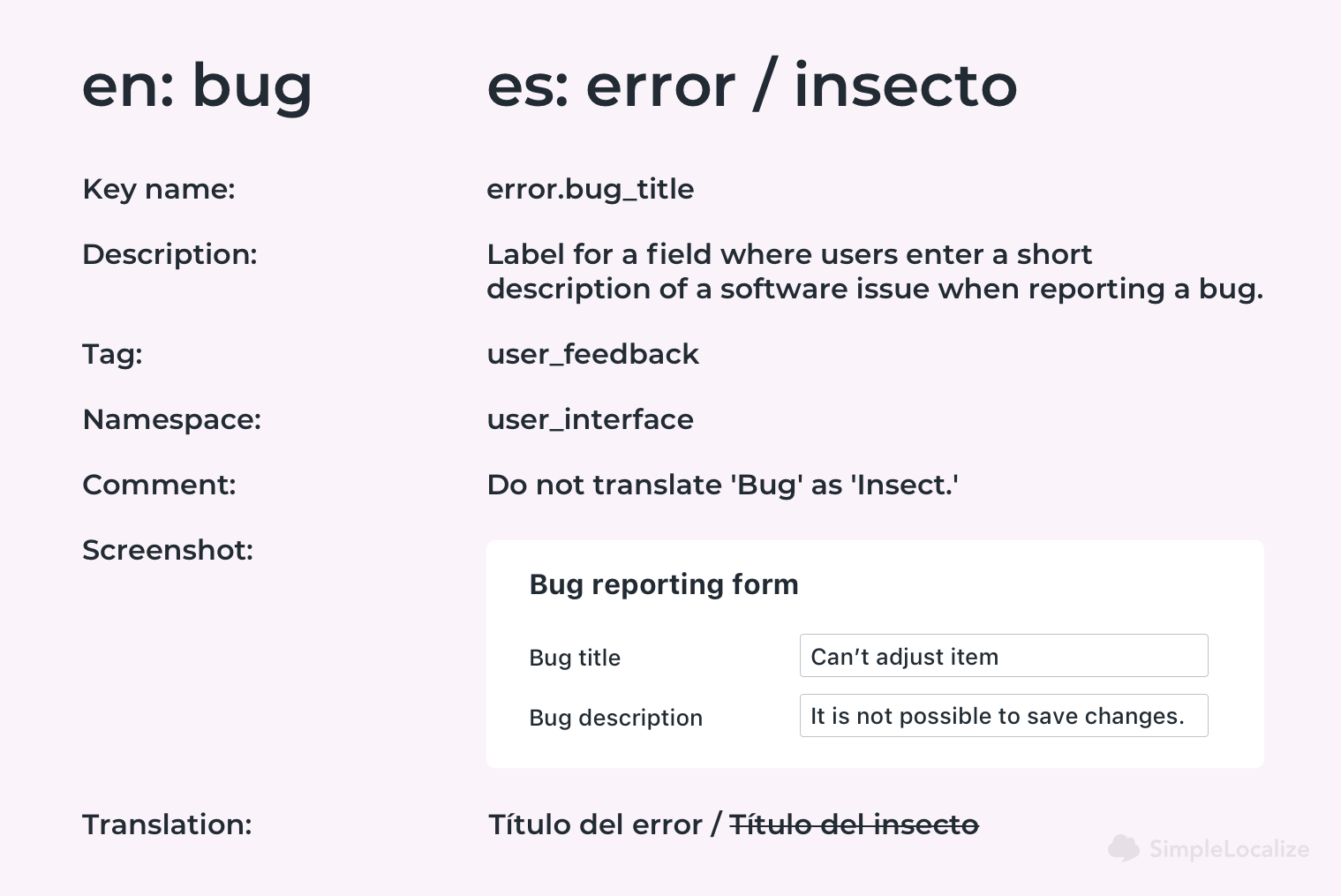
Why context matters
Context is crucial in localization for several reasons:
- Accuracy: Reduces misinterpretation and ensures precise translations.
- Consistency: Maintains uniformity across translations.
- Cultural relevance: Adapts content to align with the target audience.
- User experience: Helps translators understand how the text fits into the overall user experience, allowing them to choose words and phrases that enhance usability and clarity.
- Brand voice: Ensures the translation aligns with company messaging.
Additionally, providing context can speed up the translation process by reducing the need for back-and-forth communication between translators, developers and project managers. It improves the overall quality of translations, leading to a better user experience and higher customer satisfaction.

How to provide context in localization
Providing context to translators is essential for ensuring accurate and relevant translations. Below you can find some tips on how to effectively provide context in localization using SimpleLocalize:
Use descriptive key names
When creating keys for your strings, use descriptive names that provide context about the content. For example, instead of using a generic key like button_submit, use form_submit_button to indicate that the button is part of a form.
This helps translators understand the purpose of the string and its context within the application.

Use screenshots
Providing screenshots of the application can help translators visualize how the text fits into the user interface. This is especially useful for UI elements like buttons, labels, and error messages.
Screenshots can help translators understand the context of the string and how it will appear to users. In SimpleLocalize, you can upload screenshots directly to the key details panel, making it easy for translators to access them.
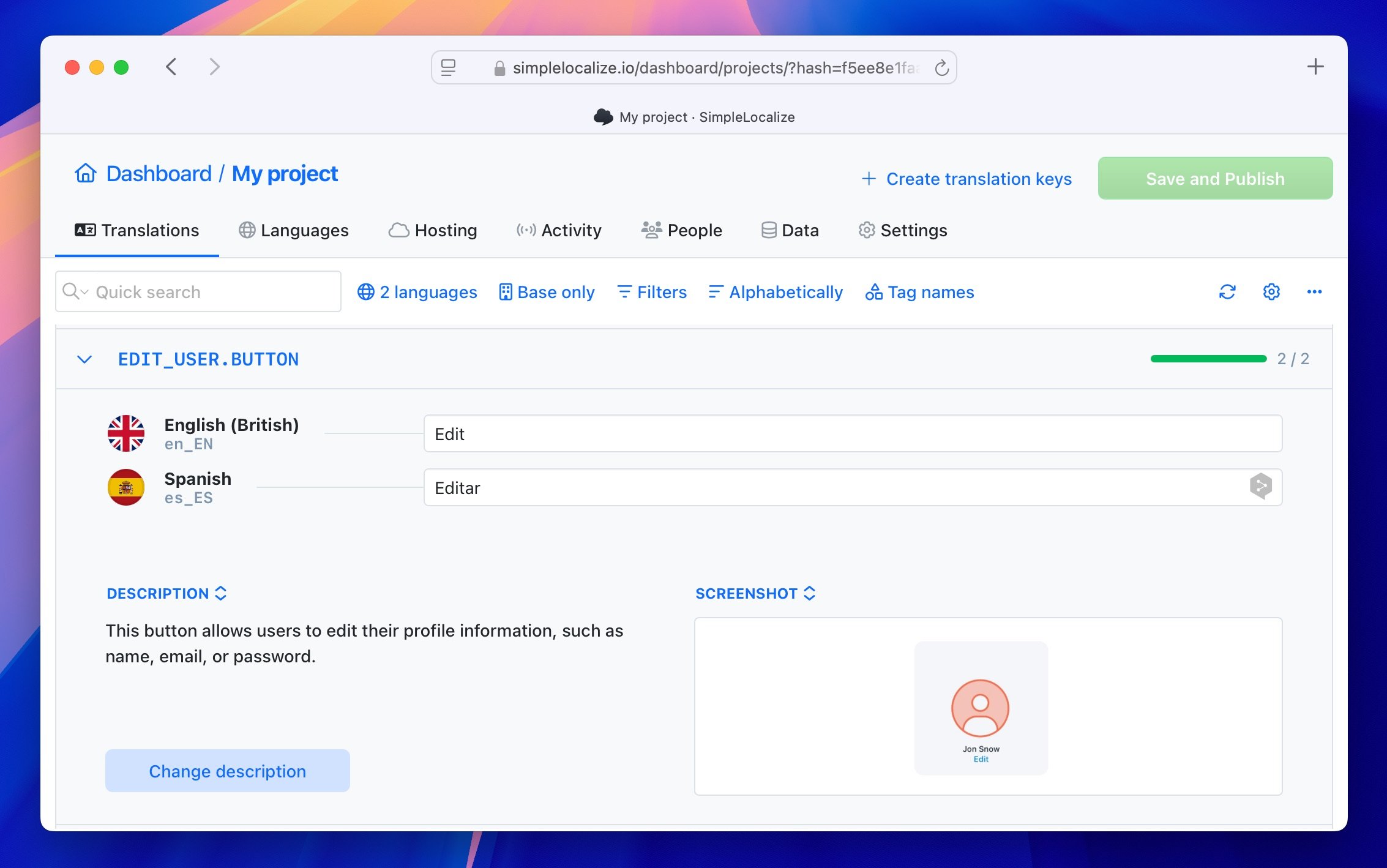
Learn more about adding screenshots to your keys.
Use tags
Using tags to categorize keys can provide additional context about their usage. For example, you can use tags to indicate whether a string is part of a specific feature, section, or module of the application.
In SimpleLocalize, you can add tags to keys in key settings. This allows translators to filter and search for keys based on their tags, making it easier to find relevant strings.

Learn more about using tags in SimpleLocalize.
Use namespaces
Namespaces are a way to organize keys into logical groups. They are mainly used to group translation files and keys by their context within the application. For example, you can use namespaces to group keys related to a specific feature or module of the application. This helps translators understand the context of the strings and how they fit into the overall structure of the application.
In SimpleLocalize, you can create namespaces for your keys in the key settings or upload them with your translations.
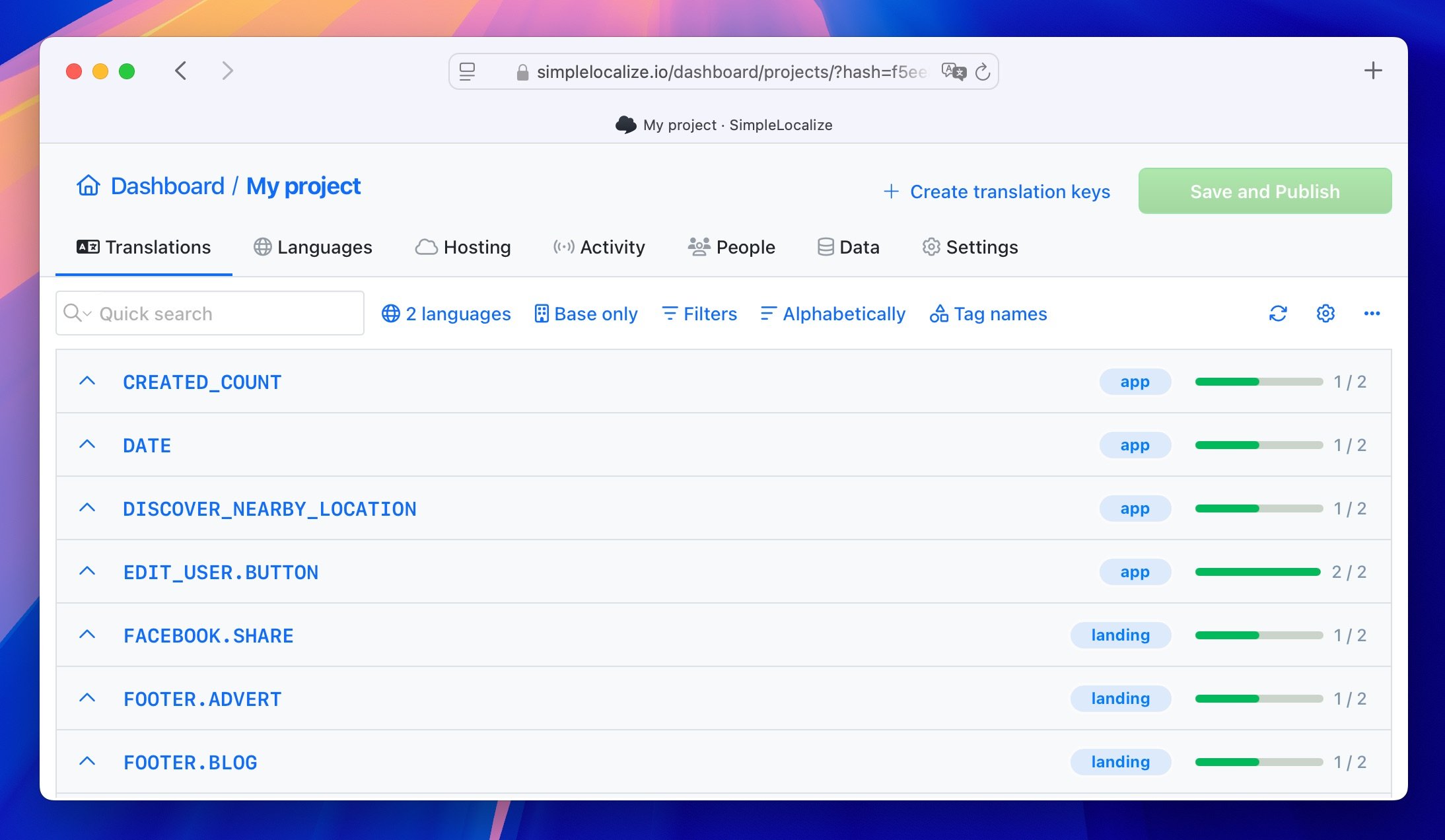
Learn more about using namespaces in SimpleLocalize.
Add comments
Add comments for translators to provide additional information about the usage and context of the string. This can include notes about specific requirements for the translation, cultural considerations, or any other relevant information.
Comments are especially useful for strings that may have multiple meanings or require specific phrasing.
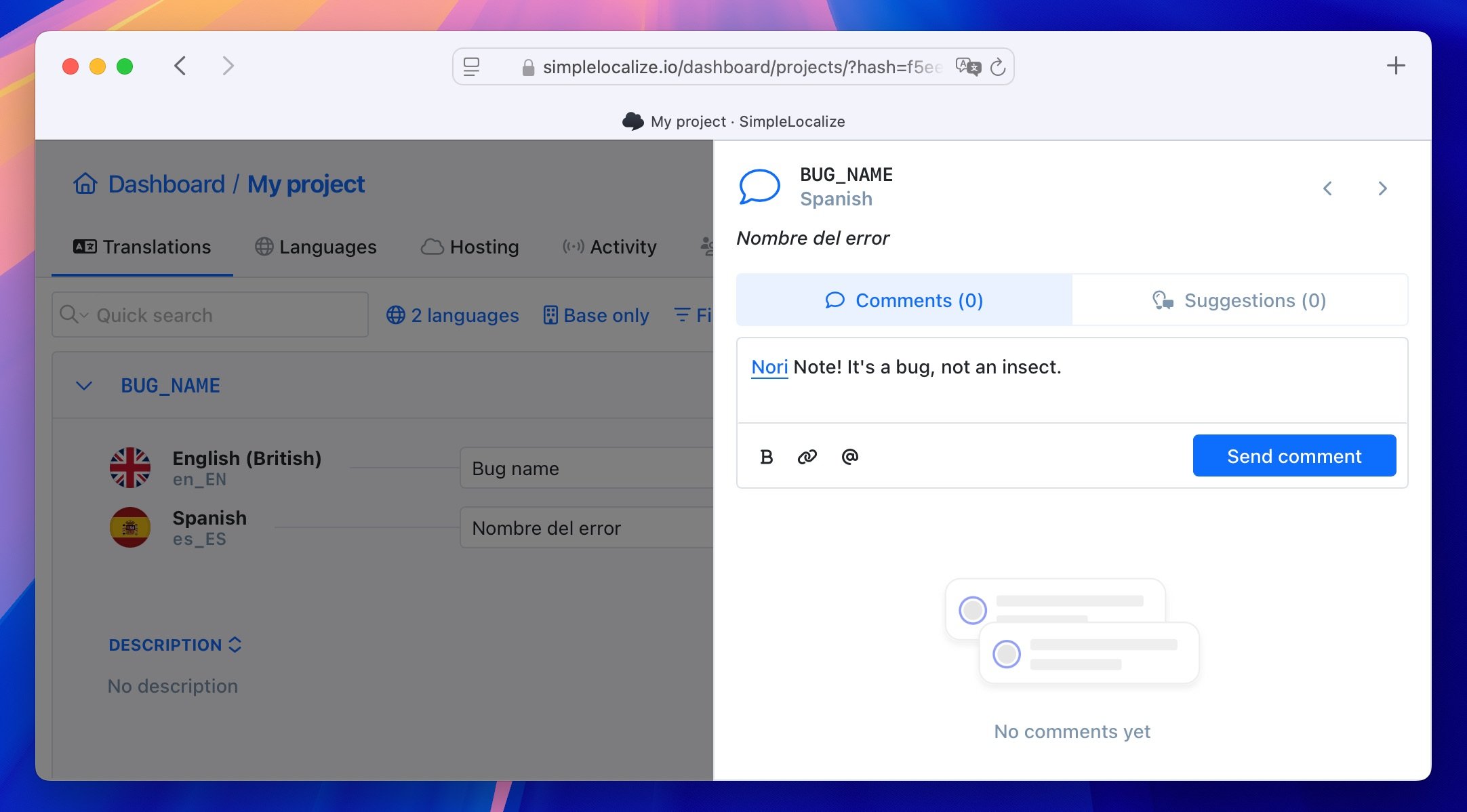
Learn more about adding comments to your keys.
Use translation memory
Translation memory (TM) provides context about previously translated strings and their usage in all your projects. This can help translators maintain consistency across translations and understand how similar strings have been translated in the past.
In SimpleLocalize, you can check the translation memory for similar strings and their translations, making it easier for translators to find relevant context.
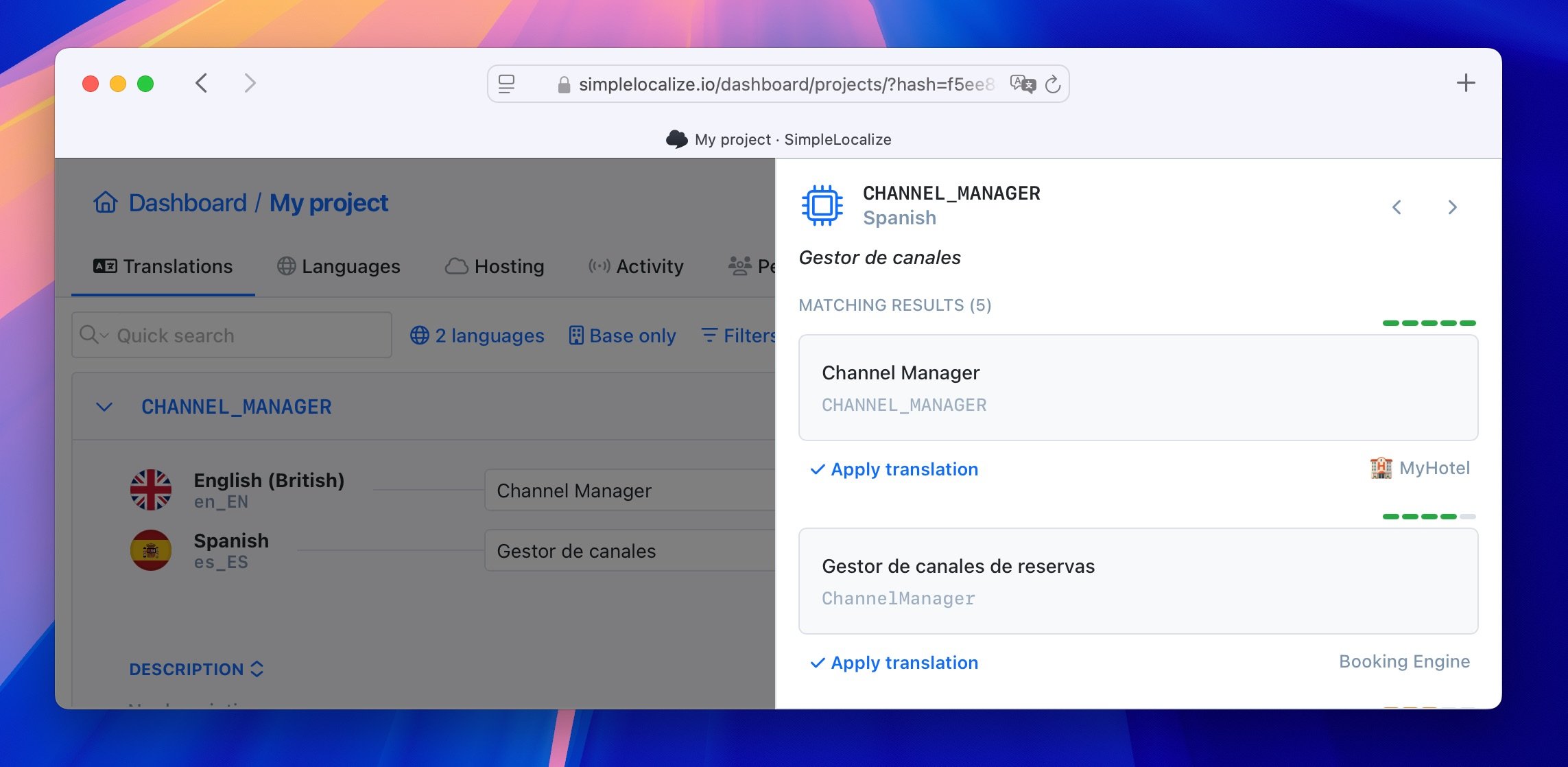
Learn more about translation memory in SimpleLocalize.
Use in-context editor
The In-Context Editor allows you to edit translations directly within the context of your application. This means you can view and edit translations while seeing how they appear in the actual user interface, making it easier to ensure that your translations fit well within the design and flow of your application.
With the In-Context Editor, you can quickly find and fix issues with translations, such as text that is too long or does not fit properly within the UI elements. It can speed up the translation process by allowing you to make adjustments on the fly.

Learn more about using the In-Context Editor in SimpleLocalize.
Context in auto-translation
Auto-translation tools, such as machine translation (MT) engines, can also benefit from context. Providing context to MT engines can improve the quality of translations by helping them understand the meaning and purpose of the text.
DeepL Glossary
DeepL Glossary allows you to provide context to the DeepL MT engine by creating a glossary of terms and phrases. This helps the engine understand the specific terminology used in your application and ensures that translations are accurate and relevant.
You can create a glossary for DeepL in SimpleLocalize to improve the quality of translations. This is especially useful for technical terms, brand names, or industry-specific jargon that may not be accurately translated by the engine.
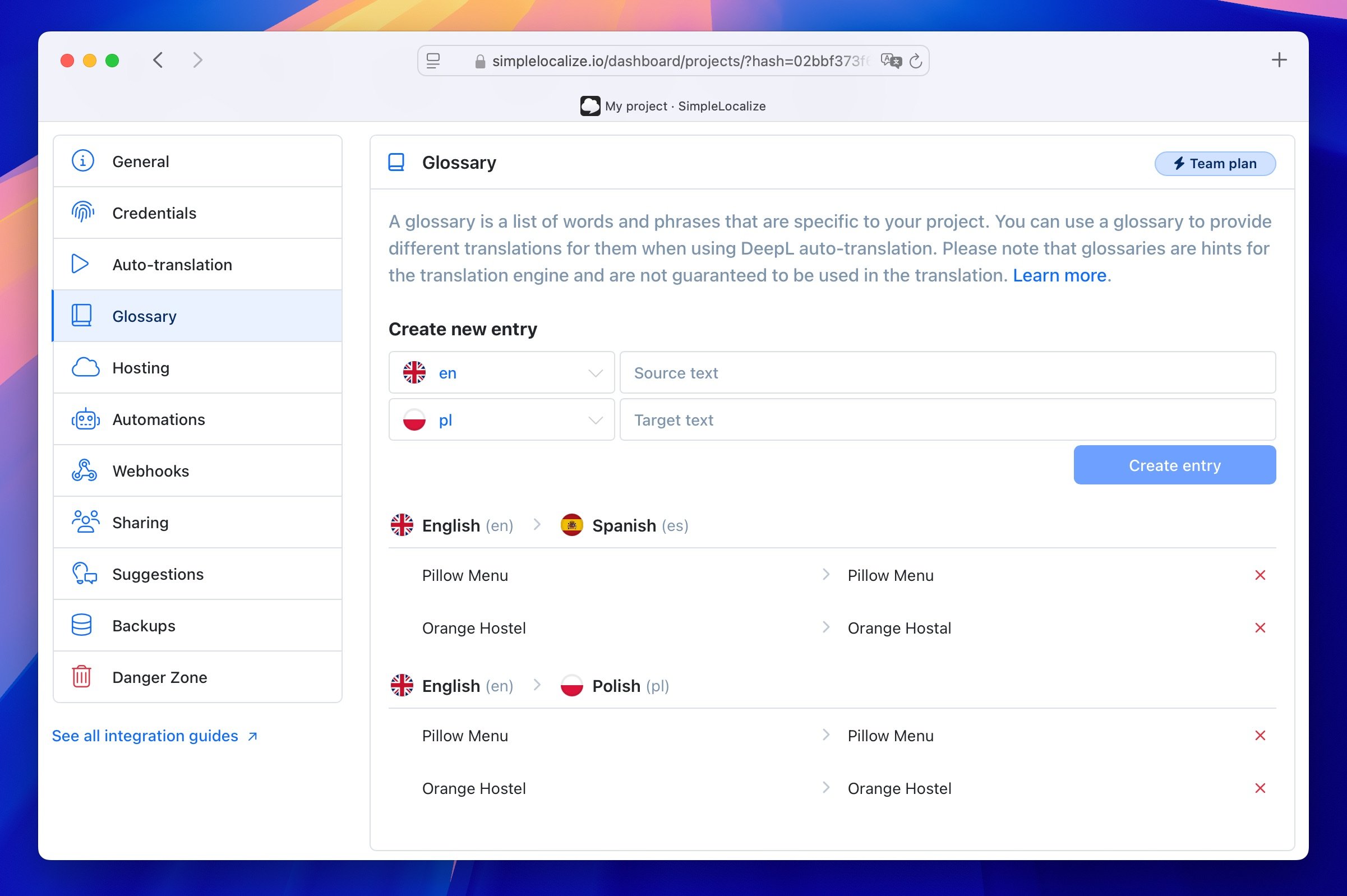
Context in AI translation
AI translation tools, such as integrated OpenAI, also rely on context. You can provide context to OpenAI in SimpleLocalize using the system prompt. This allows you to define the context in which the translation should be generated, helping the AI understand the meaning and purpose of the text.
Additionally, key descriptions can be used to provide further context to the AI engine, ensuring that translations are accurate and relevant.
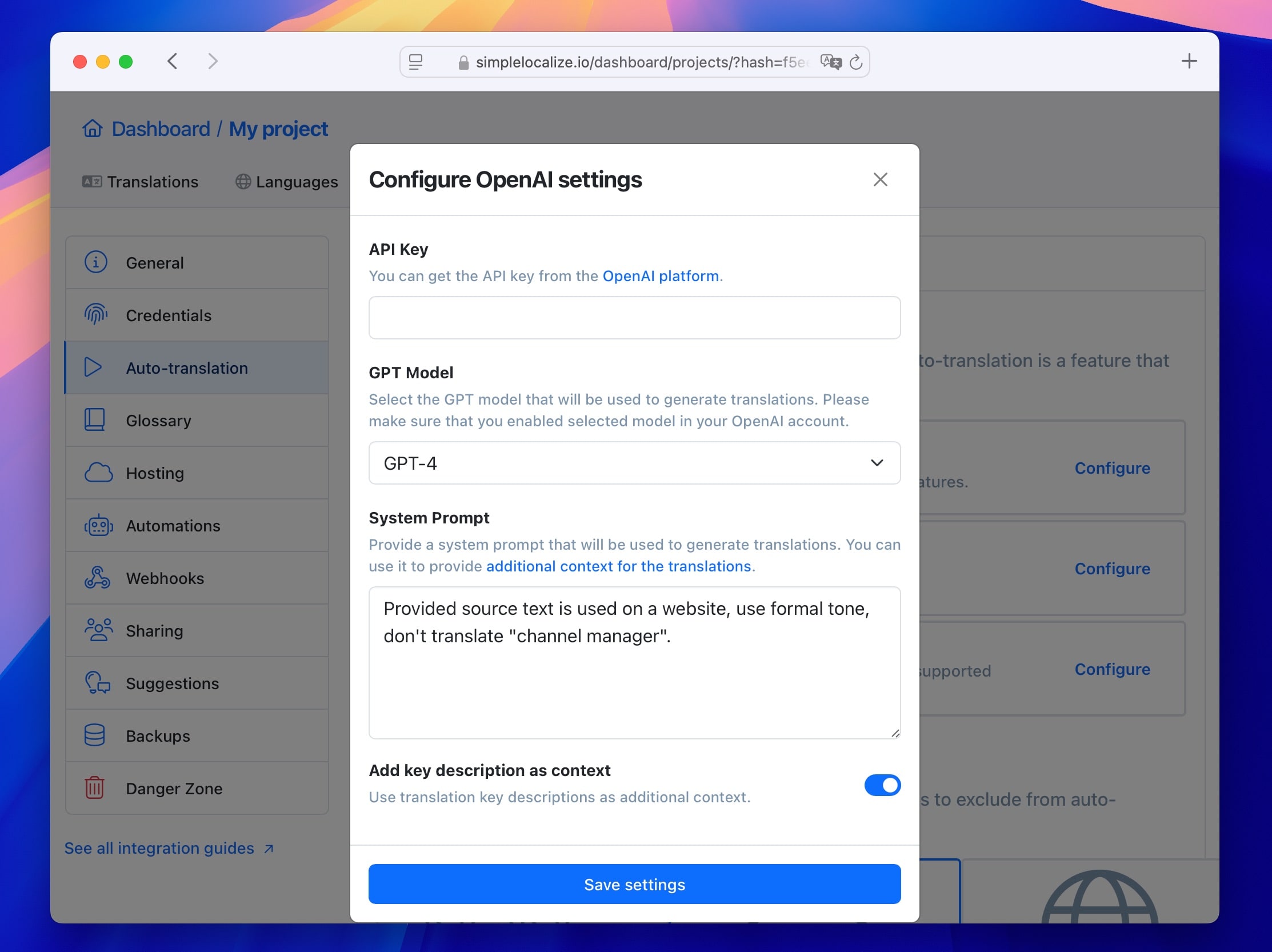
Learn more about using OpenAI in SimpleLocalize.
Context in translation API
SimpleLocalize also provides you with the ability to provide context through the translation API. This allows you to automate the localization process and ensure that context is consistently provided to translators.
When using the translation API, you can include key descriptions, tags, and namespaces in your requests. This helps ensure that translators have access to the necessary context when translating strings.
Learn more about using the translation API in SimpleLocalize.
Best practices for providing context
When providing context to translators, it's essential to follow best practices to ensure that the context is clear and relevant. Here are some tips for providing effective context in localization:
- Be clear and concise: When providing context, be clear and concise in your descriptions and comments. Avoid jargon or technical terms that may confuse translators.
- Use visuals: Use screenshots and visuals to help translators understand the context of the string. This can be especially helpful for UI elements and complex features.
- Be consistent: Use consistent terminology and phrasing across your keys and descriptions. This helps translators understand the context and maintain consistency in translations.
- Collaborate with translators: Involve translators in the localization process and encourage them to ask questions if they need clarification on the context. This helps ensure that translations are accurate and relevant.

- Review and update context: Regularly review and update the context provided to translators to ensure that it remains relevant and accurate. This is especially important for applications that undergo frequent updates or changes.
- Use translation memory: Leverage translation memory to provide context about previously translated strings and their usage. This helps maintain consistency and improves the overall quality of translations.
- Test translations: Test translations in the context of the application to ensure that they resonate with users and enhance the overall user experience. This helps identify any issues with context and allows for adjustments as needed.
- Provide feedback: Provide feedback to translators on their translations and how well they align with the context provided. This helps improve the quality of translations and encourages continuous improvement.
Conclusion
In conclusion, context is a critical component of localization that can significantly impact the quality of translations. By providing context to translators, you can ensure that translations are accurate, relevant, and resonate with the target audience. SimpleLocalize offers various tools and features to help you provide context effectively, including key descriptions, screenshots, tags, namespaces, comments, translation memory, and integration with machine translation engines.
By following best practices for providing context, you can enhance the localization process and improve the overall quality of your translations. Remember, context is everything in localization, and investing time and effort into providing it will pay off in the long run.
